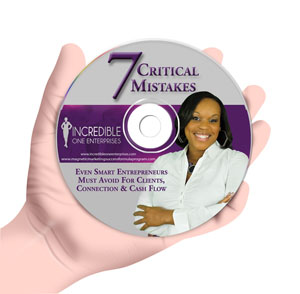If you know anything about my life currently, then you know that I’m planning a wedding, building my dream home and selling my current home. Let’s just keep it real – there’s a lot going on in my world. And even though there’s a lot going on, I am still a business owner with employees and clients that I have to support and serve.
Because I focus on building a business that serves me, I am always checking in and reviewing my plans to make sure that I don’t stretch myself thin. So, when I decided last year that I was going to get married in 2017 and I am (and no, my fiancé didn’t know about my goal until after he proposed, but I did set a very clear intention 🙂 ), I knew that I would have to plan for it – more than the average bride has to plan for their wedding. I knew that as I begin making the transition to a married business owner, I would need some time to manage the transition. As a result, I decided not to hold my annual live event that draws 200+ people from around the world in May – if I had, I would have brought on 50+ new clients who would have started in July. In doing so, I freed myself up to make my transition a little bit smoother than it would have been had I kept going at full steam. And that is why when I got Julie’s question this week, I nearly screamed with excitement.
“Hi Darnyelle. I’ve been in business nearly 10 years and right now, I’ve hit a slow point, but I’m not complaining. Typically I’m constantly running, so my question is how can I best use this time to set myself up for a business that fully serves me – financially and spiritually?”
See my response to Julie’s question in this week’s episode of Incredible Factor TV:
As I share in the episode, downtime isn’t always a bad thing – it’s a really good opportunity to reset, reinvent and reinvigorate everything in your business. And when you have the right systems in place and you have a plan that you’re working from to aid you, down time is golden. It’s just what you need to get to your next level.
Always running in your business can actually do more harm than good, as it can be hard to plan strategically when you’re constantly moving. I actually often recommend that my small business clients find some intentional downtime each year in their business – I typically take down time twice a year. It allows me to work on my books, create new products, update my 3-year strategic plan, meet with my team and determine which offerings we should keep and let go of.
When you have time to work on your business, your business growth increases. Here are three keys to make the most of positive slow time:
1. Develop or review and update your 3-year strategic plan. If you’re not running your business by a strategic plan, it could be the reason you’re experiencing negative downtime… or the feast or famine syndrome in your business. You should have a 3-year plan at all times and it should be a living, breathing document for your business. In this plan, you’ll need to be thinking about everything – I like to call them the Pillars of Business Optimization™ – Mindset, Brand Messaging, Marketing, Sales, Operations, Talent, Legacy/ Leadership/Lifestyle and you’ll need to clearly outline how you plan to use all of them to grow your business. By reviewing your goals, you’ll be able to clarify and confirm that you’re doing what brings you the most joy and eliminating everything else.
2. Make sure that you conduct a SWOT Analysis on your entire operation. By focusing in enough to determine what is good and what’s not, you’ll be able to effect change more readily in your business. Set aside time at the beginning of your down time to assess everything – what are your strengths, weaknesses, opportunities and threats? How will you manage through them? This is also a good evaluation to determine if you need help from a coach/consultant to help you better manage the ebbs and flows in your business. The SWOT will also help you to evaluate what to keep and what to let go of in every facet of your business, not just your products and services.
3. Review each offering for viability, profitability and timelessness. I believe that your products should be profitable, every single one of them. And if they aren’t, cut them. It’s seldom a good business decision to keep a program or product running that doesn’t drive your overall profitability. And if you’re profitable by the product, you’ll definitely be profitable as a business.
4. Check in with yourself and your team. Does everything that you do bring you joy? Does your team get excited about helping you to execute your big vision? Are there gaps in the team dynamic that could be contributing to you not being where you want to be? Is there anything that you want to do differently when you get back to business full-throttle?
5. Take time for self care. Downtime is a great time to get away from the day to day and rejuvenate. It’s hard work running a business and even with the most amazing team, you can get burned out. If you don’t already program self-care into your work week, then during downtime a vacation and lots of massages are in order.
So, now I want to hear from you. What’s your two cents? Have you experienced a positive slow time in your business? How did you manage it? What did you do to set yourself up for more growth following the slow period?
 ©2017 by Darnyelle A. Jervey. All Rights Reserved. Darnyelle A. Jervey, MBA, The Incredible Factor Business Optimization Coach and Mentor, is the founder of Incredible One Enterprises®, Incredible Factor University® and the Leverage Your Incredible Factor System®, a proven step-by-step program so you experience financial and spiritual abundance in your life because of your business. For more information and a FREE audio CD “7 Critical Mistakes Even Smart Entrepreneurs Must Avoid for Clients, Connection and Cash Flow!” just fill out the form below.
©2017 by Darnyelle A. Jervey. All Rights Reserved. Darnyelle A. Jervey, MBA, The Incredible Factor Business Optimization Coach and Mentor, is the founder of Incredible One Enterprises®, Incredible Factor University® and the Leverage Your Incredible Factor System®, a proven step-by-step program so you experience financial and spiritual abundance in your life because of your business. For more information and a FREE audio CD “7 Critical Mistakes Even Smart Entrepreneurs Must Avoid for Clients, Connection and Cash Flow!” just fill out the form below.






